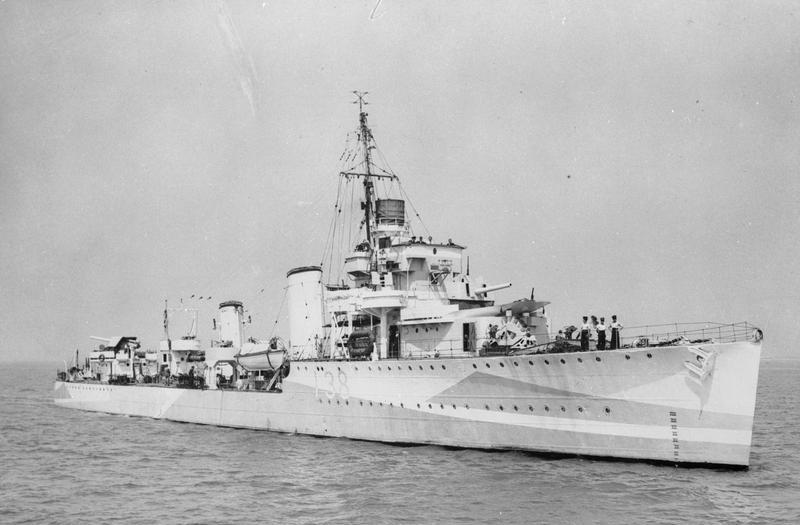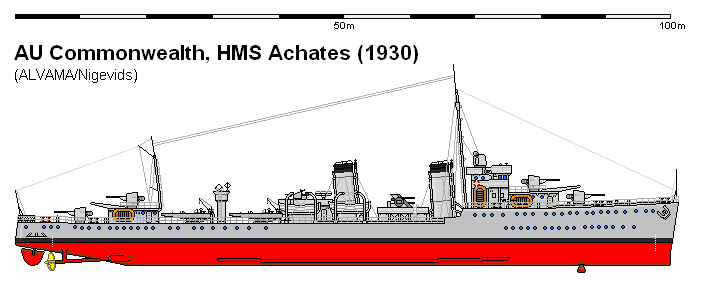F Class ships (1933):
The F class were the only ships to mount the hand loaded and
unpowered 4.5" dual purpose gun. This mounting was a stop gap
given to the ships because of the German 5" armed destroyers
supposedly outclassing the 4" armed CDE's. In practice this was not
the case. The 4.5" gun was a good gun and in the twin powered
turrets they were a winner. Bag and shell guns, they had a range of
20,000 yards and a 54lb shell. It was the hand loading of the 54lb
shell that was awkward on these ships as crew fatigue could slow
down the rate of fire. The F class were the first destroyers to be
fitted with the quad 2 pounder mounting that provided a much heavier
AA capability and also the first to mount the Hispano 20mm cannon
that did not last long in Naval service, being of too fragile a
mounting for the harsh conditions aboard ship. The F class also
changed the dimensions of the ships for the first time, and actually
made what looks like one class of ship into two.

The F class through no fault of their own were treated much like the
A-B class ships. By the end of 1942, the remaining six ships of the
class has been repurposed as long range escorts, with A (in some)
and Y guns, the aft set of torpedoes, and the forward funnel, being
removed. In their place a larger and better ASW set of depth charges
and then Hedgehog were fitted in place of the A/Y guns and
torpedoes, while the forward boiler room was replaced with oil fuel
tanks.
.png)
G-H Class Ships (1934-36):
The disappointment of the single 4.5" mounting meant a return to the
4" dual purpose gun, but this time in the Mk XVI twin mounting, as
the twin 4.5" they were meant to be armed with were just not
available. All the battleship, and aircraft carrier construction and
reconstruction used the twin 4.5" guns in their armaments. With four
twin 4" mountings, the sheer volume of fire they produced, compared
to the 4.5", was just awesome. These ships proved themselves time
after time in the Mediterranean where their AA fire was most needed.
.png)
The ships of the G-H types were kept pretty much as completed with
the main additions being to the electronic fittings and the side
mounted Hedgehog. They made very good escorts to the big carriers.
.png)
By the time all of the different Commonwealth classes, and extra ships
being built for other countries were completed, over a 100 of the A-I class were
in service. From 1934, the DP revolution altered the armaments being fitted with
single 4.5",
twin 4", then twin 4.5" mountings. During the war, different classes and indeed
ships within each class could be armed differently depending on what the
Admiralty required at the time the ship was due for refit/rebuilding. The H and
I classes featured extra ships to the classes, with an extra four H
class and an extra eight I class. On the outbreak of war the
Admiralty found eight 'H' type under construction for Brazil, four
'I' type under construction for Turkey, and another six G, H, and I
types for four other countries. These were all incorporated into the
Royal Navy, who was very glad to get them.


.png)



.jpg)
